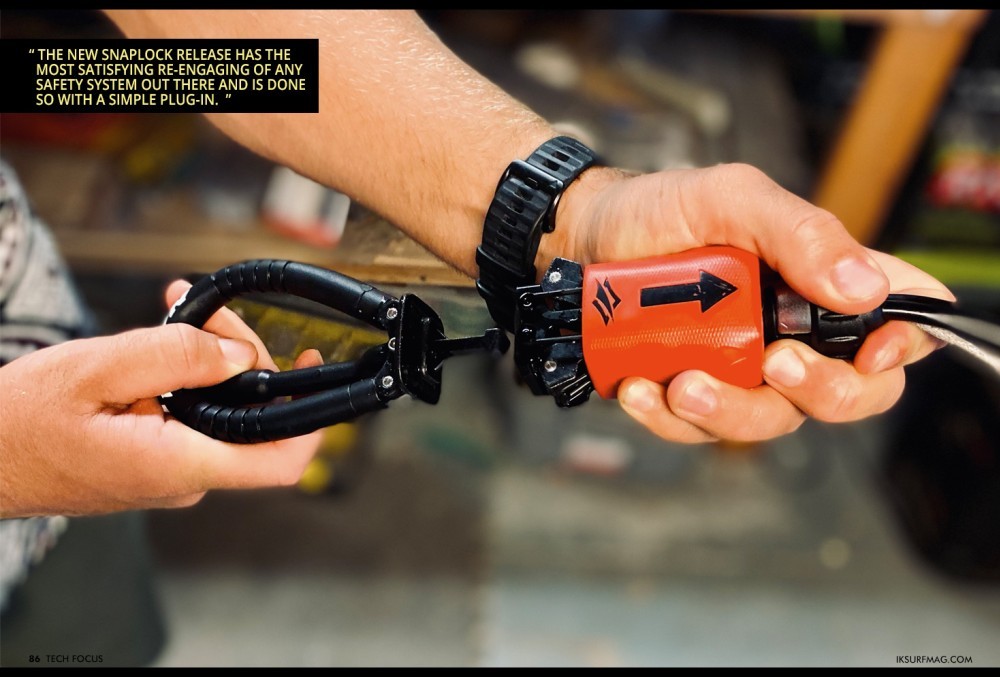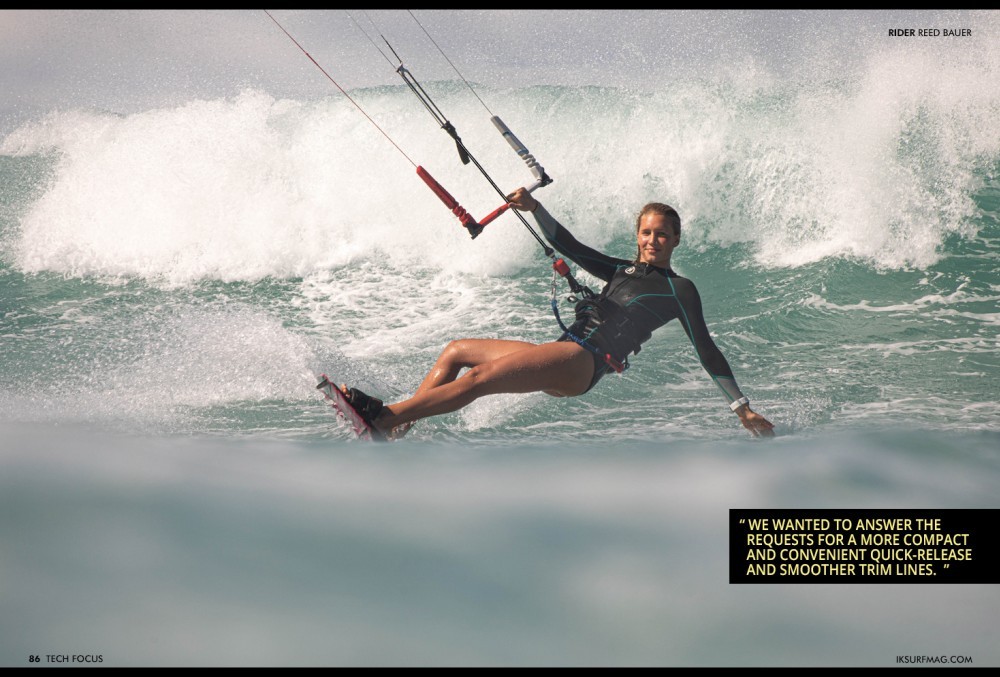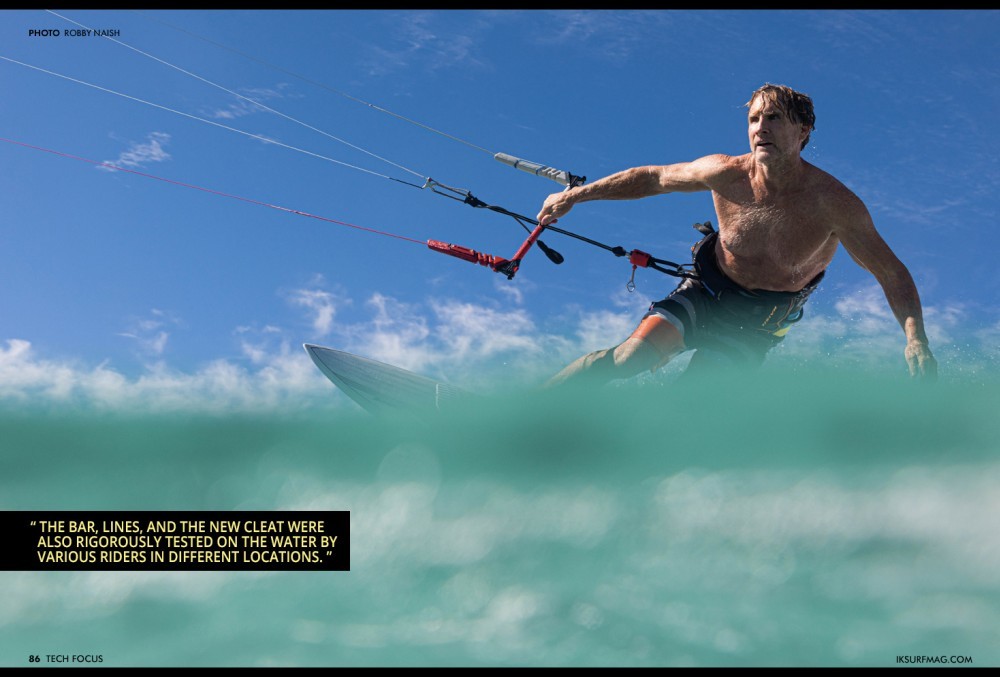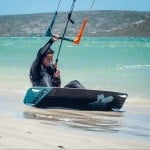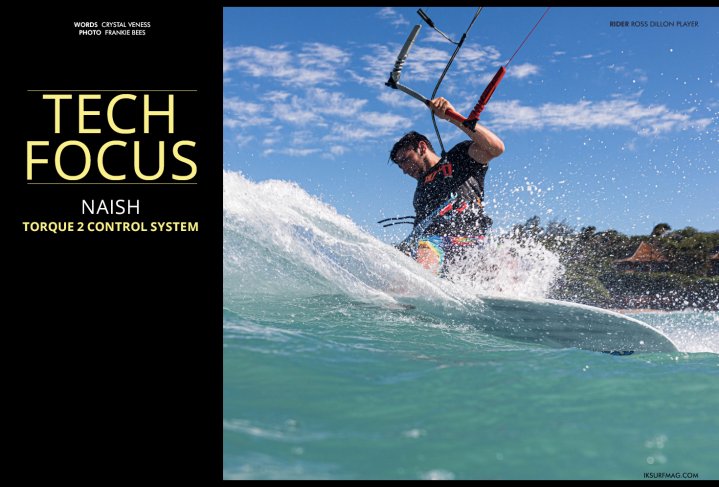
Tech Focus - Naish Torque 2 Control System
Issue 86 / Tue 13th Apr, 2021
With the new Torque 2 Control System, Naish has reimagined how riders connect to their kite. We caught up with kite engineer Brian Dennis and team rider Ewan Jaspan to get the skinny on the big redesign in this Tech Focus feature.
The original Naish Torque Control System was introduced in 2017 and has been a proven design in the Naish lineup. With the new Torque 2, Naish has reimagined how riders connect to their kite. Brain, can you tell us more about what's new?
Brian: The major changes for the Torque 2 are the quick release, the trim lines, the trim cleat, and the flying lines. The quick-release has the new SnapLock mechanism, which is very easy to release and re-assemble, even in the water. The other half of the quick release is the new loop attachment system, of which there are 3 with each bar — the standard loop, the micro-loop, and a slider loop. We've also created a freestyle loop that is available as an additional accessory and is sold separately.
The new trim lines are PU-sheathed, so they are smoother on the hands and more durable for the system. The new cleat is a smaller one-piece design that is cleaner and easier to service. The new lines on the Torque 2 are noticeably thinner, but at 400kg, they are still some of the strongest lines out there. We also sell an extra-strong line set for big air riders who want a stiffer connection. The bar itself has also received an upgrade to the grips and the floaters.
Ewan, what changes are you most excited about with the new Torque 2 Control System?
Ewan: There are many new features on the Torque 2 to get excited about. The standout for me is the quick release due to its security and simplicity. The new SnapLock release has the most satisfying re-engaging of any safety system out there and is done so with a simple plug-in. Once the male part is engaged within the system, it feels super secure and safe, giving me full trust in my equipment. The travel distance required to release has also increased, meaning accidental releases are a distant memory, again, giving me further trust, which is ever important.
As a pro rider who has achieved an expert level of proficiency across all kiting disciplines, how does this bar update improve your riding experience? Do you notice different aspects of the update in various styles of riding?
Ewan: The new bar has four different chicken loop configurations, meaning you can fine-tune your setup depending on the discipline. For me, this means I can gain extra movement for foiling and wave riding with the rope slider, have maximum ability to unhook with the freestyle loop, have an all-around option with the standard loop, or have a dedicated hooked in option in the micro loop.
Along with having the option to change loops, it is the easiest system on the market to do so. You literally just release whichever loop you want to change out and plug the new one straight in, toolless and instant. The PU coated trim lines on all the bars also give increased comfort for longer sessions and increase the life of your trim lines.
Brian, why was it time for this overhaul to the Naish Control System?
Brian: The original Torque is a great bar, which many people call the "tried and true" system. We wanted to answer the requests for a more compact and convenient quick-release and smoother trim lines.
In the previous version of the Naish Torque, users had the option of above the bar (ATB) or below the bar (BTB) depower. What is the depower system like on the Naish Torque 2?
Brian: It's all ATB now. We saw that most people were going to ATB and those with the BTB were content to switch to ATB. We did not find many customers who absolutely preferred BTB. When we floated the idea to our network of customers and dealers, they appreciated the idea of making life simpler with ATB only.
What has the development process been like for the Naish Torque 2, from the first concept to the final release?
Brian: The process began with a list of the things that riders have been asking for, from beginners to pros. Robby, Alex, and I then began to brainstorm — studying examples from our past, from other brands, and from other industries. We agreed that our quick release ought to be as simple and safe as a standard quick-disconnect used on air hose fittings. So we cut one of those in half to study its construction and then we adapted the design for kiting. This assembly went through several iterations and many months of testing on the water and in the lab. The bar, lines, and the new cleat were also rigorously tested on the water by various riders in different locations. The exhaustive testing has been the key to identifying all potential design issues, ensuring we have a safe and robust design.
Thanks for taking the time, Brian and Ewan. We look forward to seeing the Naish Torque 2 hit the market in early summer!
By Crystal Veness
Editor at IKSURFMAG, Crystal Veness hails from Canada but is based in South Africa. When she isn't busy kitesurfing or reporting on the latest industry news for the mag, she is kicking back somewhere at a windy kite beach or working on creative media projects.




